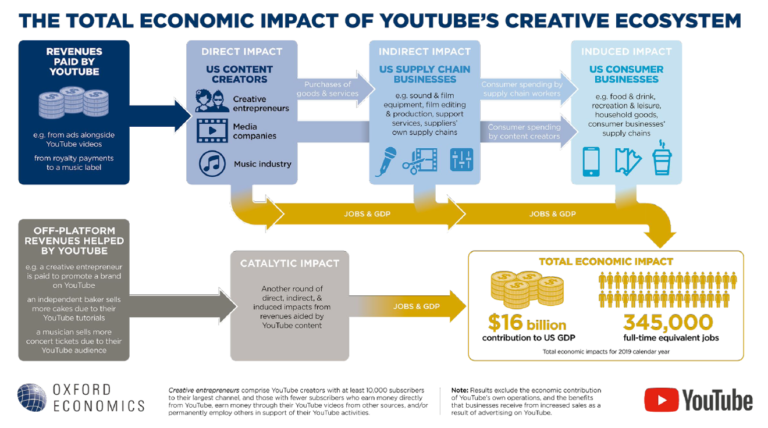In her Letter from Susan: Our 2021 Priorities, published on the Official YouTube Blog yesterday, CEO Susan Wojcicki shared a great deal of information and insight for YouTube creators and viewers alike.
Wojcicki tackled a number of important topics, including:
- Growing the creator economy.
- Living up to corporate responsibilities.
- Helping people learn new skills.
- Building for the future of YouTube.
- The regulatory landscape.
YouTube’s CEO since 2014, Wojcicki also shared some new stats about YouTube that are normally held under wraps until major tent-pole events like Brandcast in the Spring or VidCon in the Summer.
In Q1 2020, for example, she shared that YouTube watch time increased 25% worldwide and that it was YouTube’s biggest gaming year yet. Viewers consumers over 100 billion hours of gaming content last year alone.
Wojcicki also revealed that total daily live streams grew by 45% in the first half of the year and that more than half a million channels live-streamed for the first time in 2020, as well.
From artists performing in their living rooms to churches moving their services online, these “first-time streamers accounted for more than 10 million streams on the platform,” she said.
Here are the top takeaways from Wojcicki’s 2021 priorities update.
How YouTube is Growing the Creator Economy
In her statement, Wojcicki disclosed that the number of new channels that joined the YouTube Partner Program (YPP) in 2020 more than doubled over the previous year.
She cited an Oxford Economics report, which found “YouTube’s creative ecosystem contributed approximately $16 billion to the U.S. GDP in 2019, supporting the equivalent of 345,000 full-time jobs.”

To illustrate how YouTube is growing the creator economy, Wojcicki told the story of Brandon Reed. Check it out:
Reed still remembers receiving his first check from YouTube, she said. Today, he works on his YouTube channel full-time and has amassed more than 250 million views.
Wojcicki revealed that over the past three years, YouTube has paid out more than $300 billion to creators.
Key Areas of Focus for YouTube in 2021
YouTube’s CEO outlined three key areas where the platform will support creators and artists in the year ahead:
1. Policy Transparency
Although YouTube has policies to protect community members from abuse, Wojcicki notes that she recognizes it has been difficult for creators to keep up with changing guidelines.
In the year ahead, they will attempt to support the creator ecosystem at scale with greater transparency.
2. Additional Sources of Revenue
Music and Premium subscriptions have grown and as of Q3 2020, YouTube boasted more than 30 million paying members.
Continuing to find new ways for creators and artists to monetize content is a priority.
3. Supporting Success of All Creators
Wojcicki notes that YouTube has heard concerns from various communities and particularly Black YouTubers about issues affecting their enjoyment of the platform.
In 2021, YouTube will begin to ask U.S. creators to provide demographics information such as race, ethnicity, and sexual orientation on a volunteer basis to aid in identifying gaps in its systems.
How YouTube is Living Up to Corporate Responsibilities
Alongside its creators, Wojcicki said, YouTube has served over 400 billion impressions of COVID-19 information panels.
YouTube continues to update its COVID-19 policies and, since February 2020, has removed more than 500,000 non-compliant videos from its platform.
As of October 2020, YouTube’s medical misinformation policy allows for the removal of vaccines misinformation—that is, content that contradicts the advice of health authorities such as the CDC and WHO.
Wojcicki also wrote about the #YouTubeBlack Voices Fund, which is dedicated to sharing important stories about Black experiences. Currently, there are 132 creators and artists in YouTube’s ‘Black Voices Class of 2021.’
How YouTube is Helping People Learn New Skills
According to a recent Ipsos study Wojcicki cited, 77% of YouTube users say they used the platform in 2020 to learn a new skill. She also mentioned that videos with the word “beginner” in the title have received more than a billion views since the beginning of the lockdown in mid-March.
A mother of five children, Wojcicki shared a personal anecdote about how she learned to cut hair, fix her fridge, research bitcoin, and more on the YouTube platform.
She also highlighted creators who found ways to help the community meet the challenges of quarantine.
For example, Crash Course and Arizona State University (ASU) created a series called Study Hall that focused on critical academic subjects like writing composition and algebra, breaking them down into easy-to-follow formats.
In addition, Eddie Woo developed videos to help teachers learn how to get started on YouTube.
And Mayuko, a Software Engineer who traded a Silicon Valley job for a YouTube channel, helped people with technology and career advice.
One example of how YouTube can change lives, Wojcicki said, is Josh Carroll’s story. The Army veteran was working as a janitor when he learned advanced math on YouTube, which led to his second career as a physicist.
Building for the Future of YouTube
YouTube’s CEO also outlined a few areas where creators can expect new capabilities in the foreseeable future. This includes:
1. Mobile Creation
YouTube is now beta testing YouTube Shorts in Indie. To date, videos in the new Shorts player have received 3.5 billion daily views.
2. Commerce
Wojcicki cited a Talk Shoppe survey in stating that 70% of consumers have made a purchase recently after seeing the brand on YouTube.
She is excited to see shopping integrated into the YouTube experience, she said, and revealed that YouTube is currently testing a new beta program with beauty and electronics creators.
Living Room
TV was the fastest-growing screen among YouTube viewers in 2020, Wojcicki said. This is why YouTube is focusing on improving the look and performance of the Living Room app.
The Regulatory Landscape
Finally, Wojcicki said, “There’s another area that will be a significant focus in 2021 – regulation. We’ve benefited from partnerships with governments on critical issues, like preventing violent extremism and coordinated influence operations on our platform. Last year, these partnerships were incredibly helpful as we worked together to provide people with accurate information during the pandemic.”
She added, “The European Union recently introduced the Digital Services Act (DSA) that could have major implications for online speech. We’ll update you as this progresses, and we’re also working with governments like the United Kingdom as they consider legislation to take on harmful content.“
And she concluded, “This year, we’ll continue to advocate on behalf of creators and work closely with governments to make sure policymakers understand the potential impact their decisions could have on all of you.”
The Oxford Economics report mentioned above is an example of how YouTube is likely to do that.
More Resources:





![AI Overviews: We Reverse-Engineered Them So You Don't Have To [+ What You Need To Do Next]](https://www.searchenginejournal.com/wp-content/uploads/2025/04/sidebar1x-455.png)